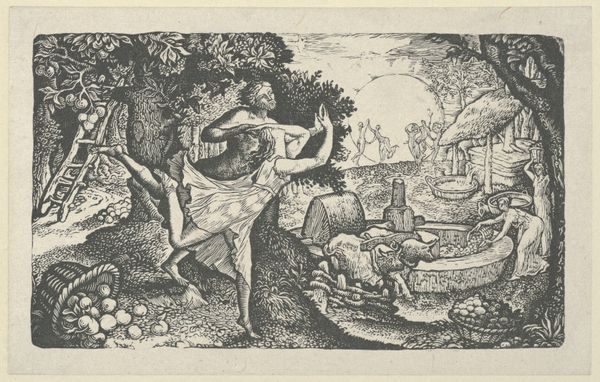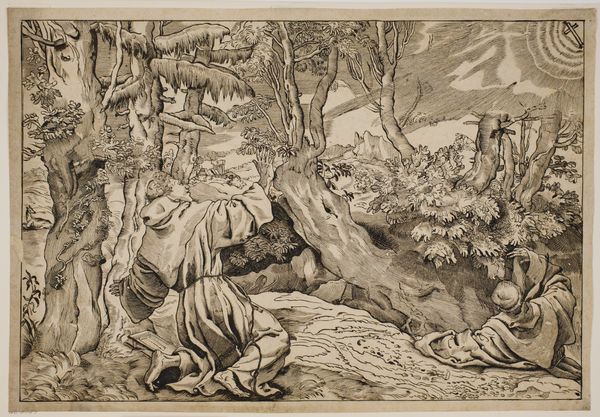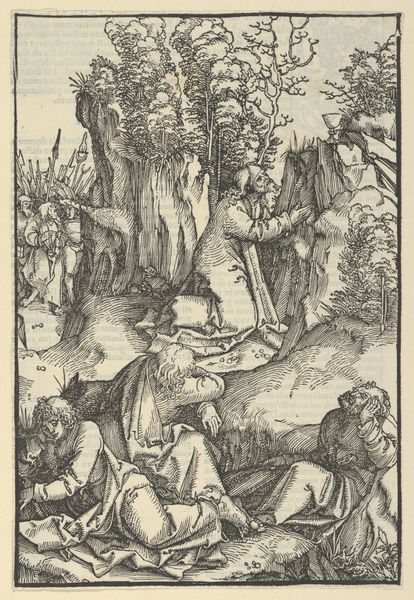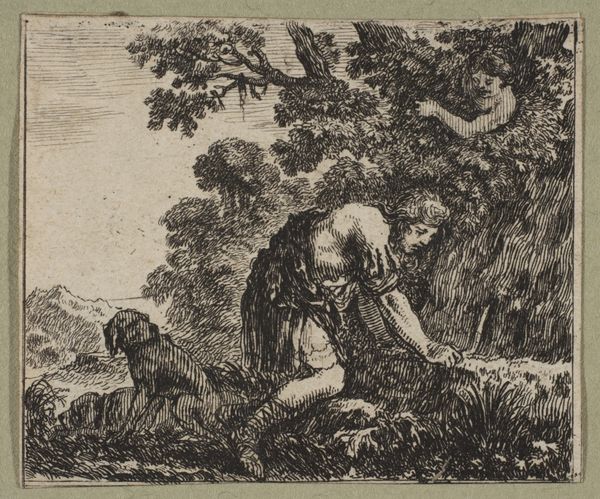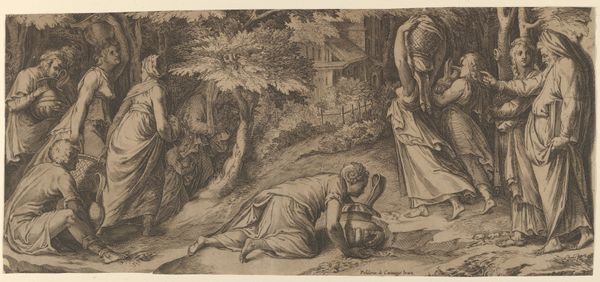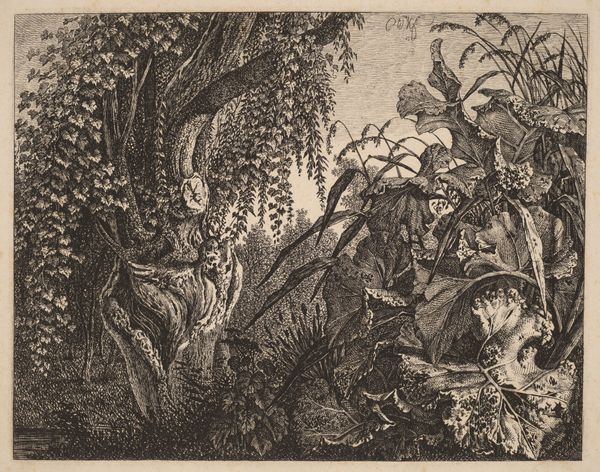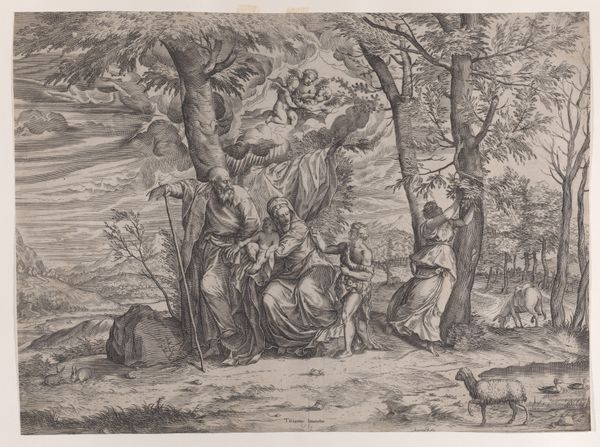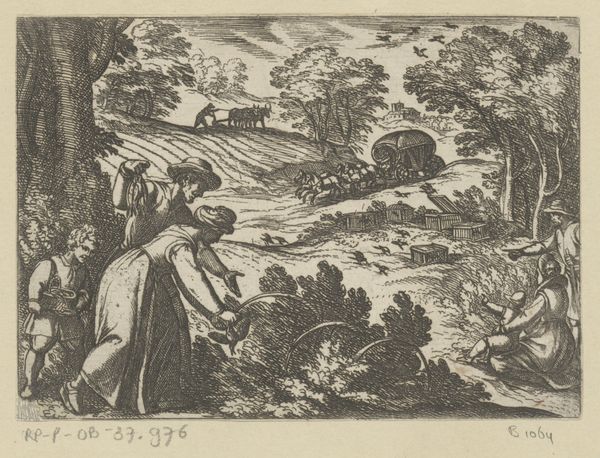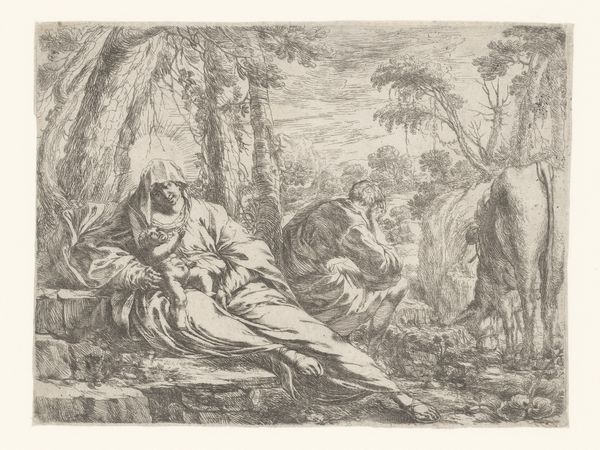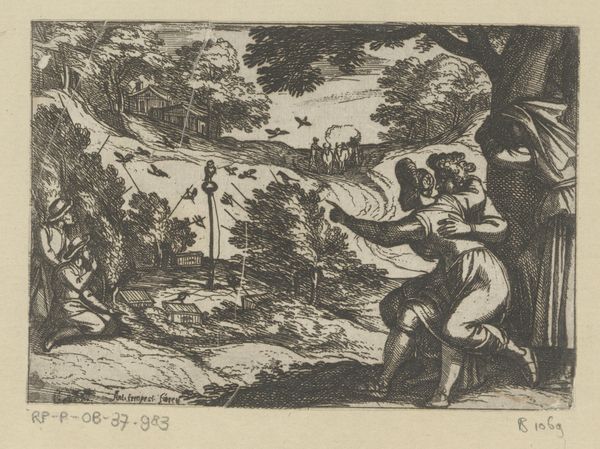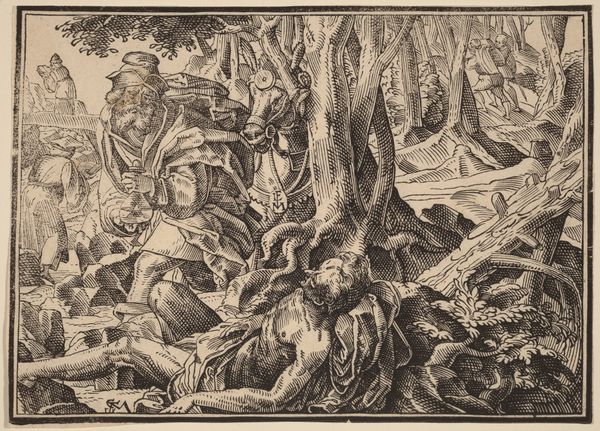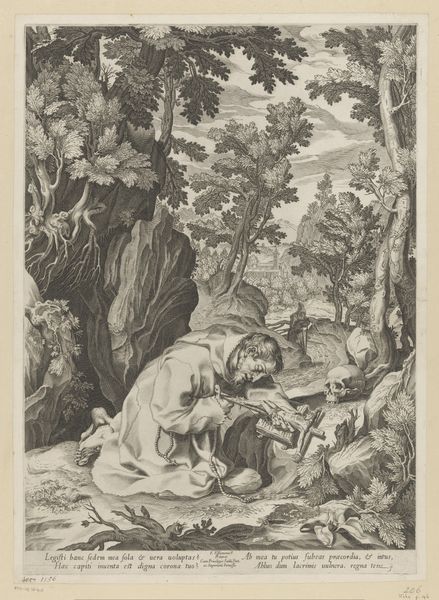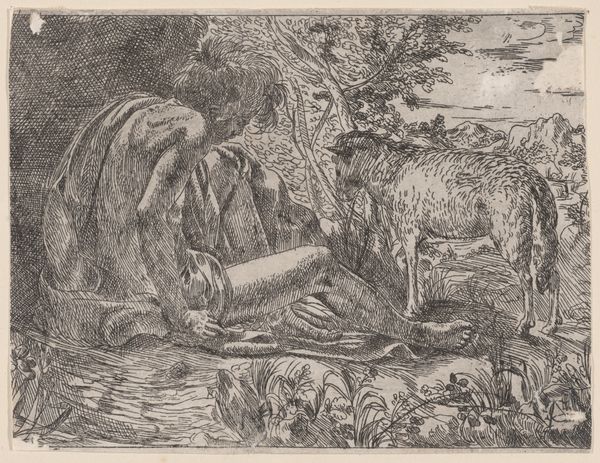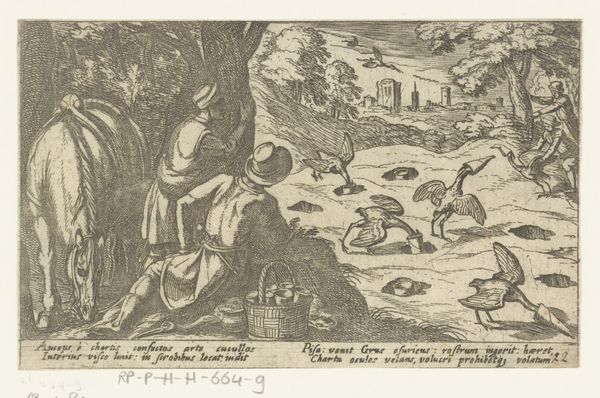
print, engraving
#
pen drawing
# print
#
pen illustration
#
pen sketch
#
landscape
#
ink line art
#
11_renaissance
#
history-painting
#
northern-renaissance
#
engraving
Dimensions: height 294 mm, width 437 mm
Copyright: Rijks Museum: Open Domain
Curator: This pen drawing from after 1530, found here at the Rijksmuseum, depicts the St. Francis receiving the stigmata. It’s a pen and ink illustration showing Saint Francis in a landscape filled with detail, rendered in the style of the Northern Renaissance. What strikes you first about this image? Editor: It feels almost claustrophobic despite being a landscape, doesn't it? The density of the trees pressing in on Francis. The texture alone gives such immediacy, though; you can practically feel the rough bark. Curator: The density does enhance the drama. This composition reflects the intense spiritual experience—isolation, the raw immediacy of divine connection. The stigmata, those wounds mirroring Christ’s, are often depicted as transformative moments set apart from the mundane world. The forest setting in Northern Renaissance art often symbolized a place of both danger and spiritual seeking. Editor: How do you interpret the social context, given its Northern Renaissance roots? Was this accessible art? Curator: As an engraving, it suggests a wider distribution than a unique painting or manuscript. Prints allowed for religious narratives to be disseminated, reinforcing religious ideals in the wider populace. However, it is the image of the ecstatic devotee, Francis, at center. His acceptance of divine will becomes both deeply personal and, because of its circulation, a call for others to emulate this spirituality in the face of a changing society. Editor: I'm thinking of this imagery and the political climate of that era. Images become political acts. Was this kind of fervent display of piety seen differently in areas undergoing Reformation? Curator: Absolutely. In regions embracing Reformation ideologies, images faced scrutiny. An engraving like this might function as a form of religious affirmation. Even as the iconoclasm was at the heart of social change, such small yet pervasive works reassert traditional spiritual connections in everyday settings. They carry echoes of an older order, made new in changing times. Editor: It really highlights the power of a visual medium in reinforcing—or even contesting—dominant ideologies, and a piece like this captures so much nuance. Curator: Indeed, it reminds us how an artwork, no matter how small or seemingly straightforward, is caught in cultural currents, shaping and being shaped by the tides of history.
Comments
No comments
Be the first to comment and join the conversation on the ultimate creative platform.
